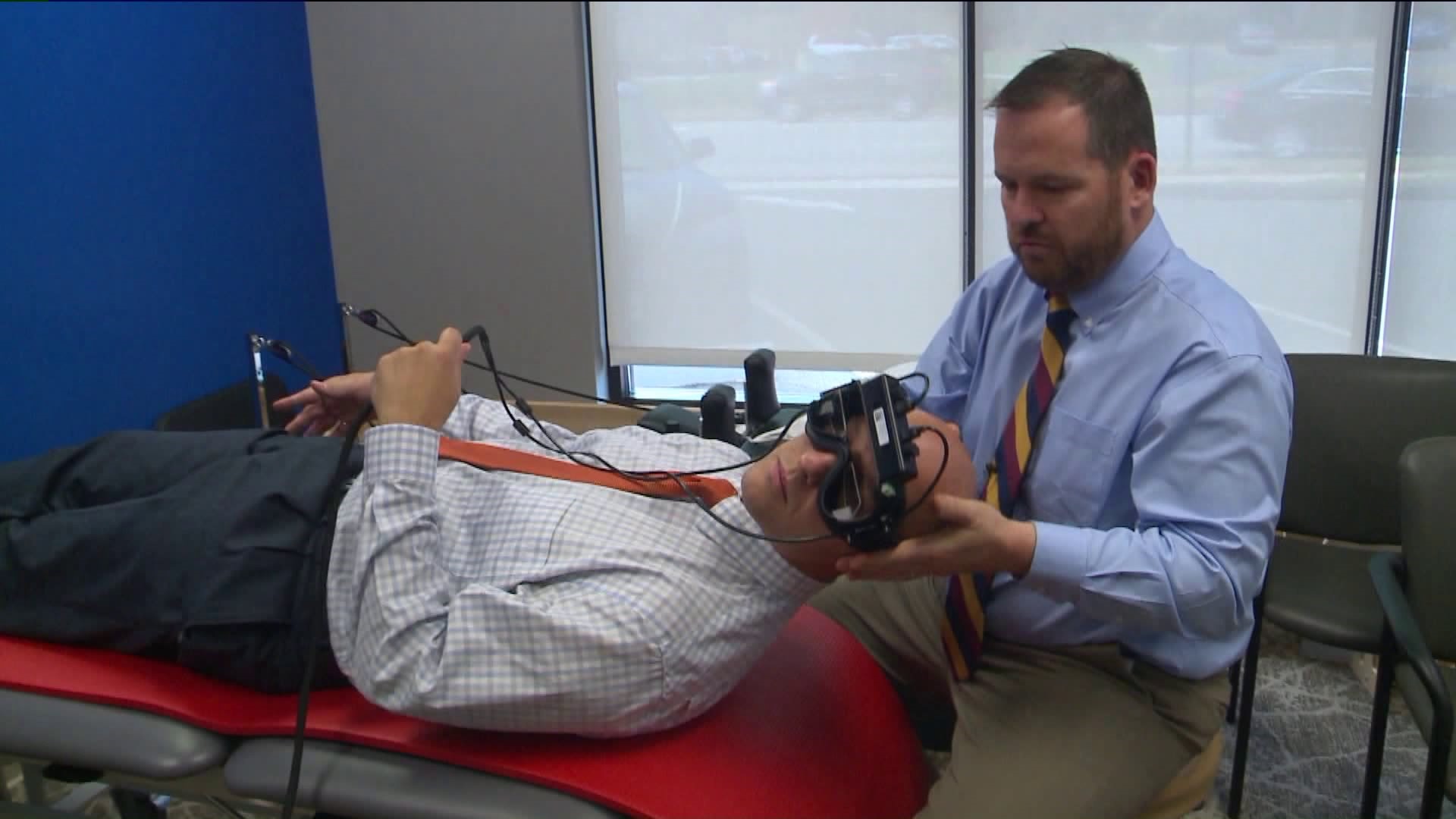HARTFORD -- Dizziness is as common as it is unpleasant, and it can happen for many reasons. One of the most severe forms of dizziness - spinning vertigo, or the sensation that your head is spinning when it's not - can be especially unpleasant.
“It was absolutely debilitating, it was distressing, it was scary because you would never know when it was coming on,” said Leslie Briggs, who suffered from bouts of vertigo for years.
“The room starts going around and you start thinking things like strokes and brain tumors and people kind of go right to the worst," said Dr. Marc Eisen, a Neurotologist at Connecticut Ear, Nose and Throat Associates, also known as 'The Dizzy Clinic,' " [but] the good news is those are really, really unusual and rare.”
Dr. Eisen said that one of the most common forms of vertigo, Benign Paroxysmal Positional Vertigo, or BPPV, starts in the inner ear, and can be relatively easily treated.
“You have an ear working on this side and an ear working on this side like little gyroscopes telling your brain where your head is in space," he said.
"Shut one off suddenly, [and] your brain thinks that your head is spinning to the good side.”
Dr. Eisen said some naturally-occurring crystals in the ear, which are normally used for sensing acceleration and deceleration, can sometimes get dislodged and wind up in the wrong canals of the ear, causing dizziness. If that happens, a physical therapist can help to dislodge them by guiding a patient through a series of physical positions that are meant to literally draw the crystals out of the wrong canals using gravity.
One such maneuver, the Epley maneuver, takes only minutes to perform and can provide quick relief that, in many cases, can last for a long time.
It involves laying the patient down on his or her back, with the head reclined off the edge of the therapy table past 90 degrees. The head is then rotated through a series of positions, with a rest period of up to a minute in between, to allow time for the crystals to migrate.
The maneuver ends with the patient sitting upright, and often, with the patient eventually breathing a big sigh of relief as well.

